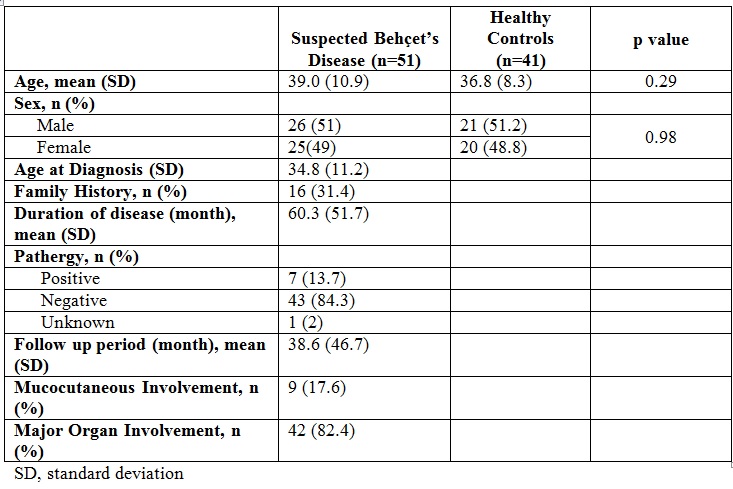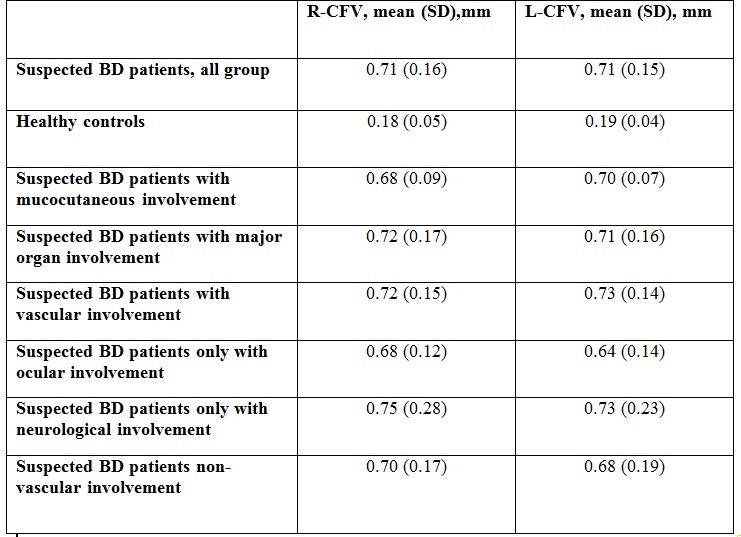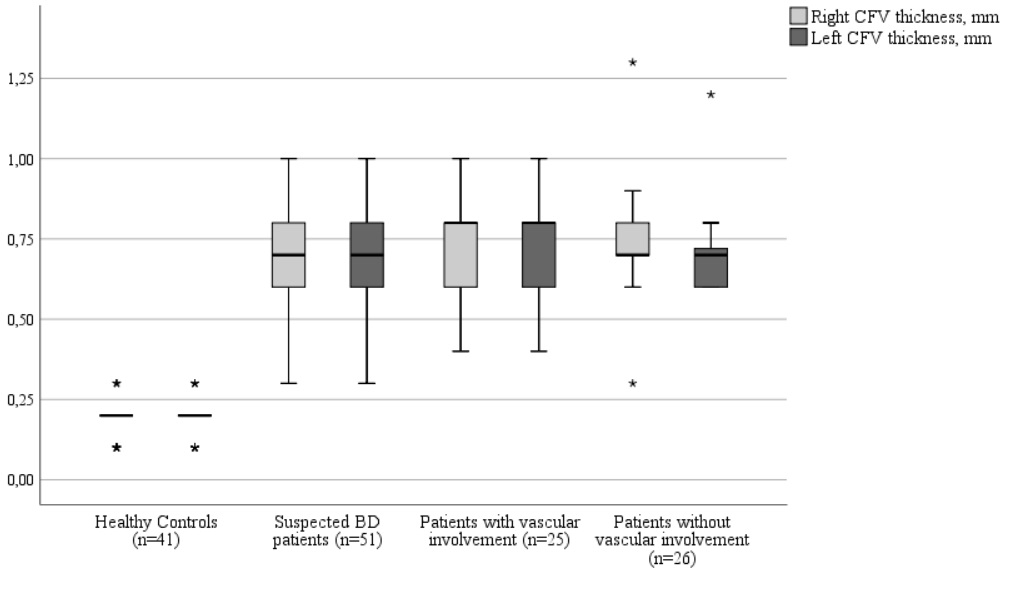Session Information
Date: Monday, November 13, 2023
Title: (1554–1578) Vasculitis – Non-ANCA-Associated & Related Disorders Poster II
Session Type: Poster Session B
Session Time: 9:00AM-11:00AM
Background/Purpose: The diagnosis of Behçet’s disease (BD) is mainly based on multi-systemic clinical manifestations after ruling out other potential causes. There is no specific diagnostic feature for BD. Therefore, the diagnosis may be a challenge in patients especially those presenting with only major organ involvement. The development of other disease manifestations to make a definite diagnosis can sometimes take months and even years and disease can remain clinically limited lifelong in some patients. In this group of patients, the term incomplete or suspected BD was used especially in Japanese Criteria, also possible BD was defined in recent ICBD Classification Criteria. Diagnosis is made by ‘expert opinion’ according to the presence of specific clinical manifestations of BD. We recently published the first controlled Doppler US study showing increased venous wall thickness (VWT) of lower extremity veins in male BD patients, and suggested that the cut-off value of≥0.5 mm for common femoral vein (CFV) thickness had a high specificity and sensitivity for the diagnosis of BD ( >80%). We later assessed the diagnostic performance of CFV thickness measurement in BD compared to multiple disease control groups. We found that CFV thickness is a distinctive feature of BD, rarely present in other inflammatory or vascular diseases. Most recently, increased VWT was observed in childhood BD with and without vascular involvement, and suggested as a new criterion for the diagnosis in both definite and incomplete pediatric BD patients. In this study, we aimed to assess the diagnostic performance of CFV thickness measurement in patients with ‘suspected’ BD and compared it with healthy controls.
Methods: Suspected BD was defined as limited manifestations not meeting ISG and Japan Research Committee Criteria, but diagnosed as BD by expert opinion. 51 patients were recruited from Behçet’s Clinic of Marmara University. Bilateral CFV wall thickness was measured in the prone position from the posterior wall by an experienced radiologist blinded to the clinical data.
Results: The mean age of suspected BD patients was 39 years (SD: 10.9), and the mean disease duration was 60.3 (SD: 51.7) months (Table 1). 42 (82.4%)had major organ involvement (20 vascular, 8 ocular, 8 neurological involvement). The mean right CFV (R-CFV) wall thickness was 0.71 (SD: 0.16) mm, the left CFV (L-CFV) wall thickness was 0.71 (SD: 0.15) mm in the study group. Bilateral CFV thickness was significantly higher than age-sex-matched healthy controls (p< 0.001 for both). There was no difference between patients with and without vascular involvement (Table 2, Figure 1). 48 (94.1%) patients had CFV wall thickness above the cut-off value of ≥ 0.5 mm.
Conclusion: Our study shows that CFV thickness measurement can be helpful in daily practice for the differential diagnosis of BD in patients presenting with limited disease manifestations. Early diagnosis of BD is important, especially in cases presenting with venous thrombosis due to major treatment differences between thrombosis associated with BD and non-inflammatory thrombosis. Our results suggest that CFV thickness measurement is a noninvasive, and widely accessible diagnostic tool in suspected BD.
To cite this abstract in AMA style:
Alibaz-Öner f, Ergelen R, Kutluğ Ağaçkıran S, Temiz F, Ergun T, Direskeneli H. Common Femoral Vein Wall Thickness Measurement as a Diagnostic Test in Suspected Behçet’s Disease [abstract]. Arthritis Rheumatol. 2023; 75 (suppl 9). https://acrabstracts.org/abstract/common-femoral-vein-wall-thickness-measurement-as-a-diagnostic-test-in-suspected-behcets-disease/. Accessed .« Back to ACR Convergence 2023
ACR Meeting Abstracts - https://acrabstracts.org/abstract/common-femoral-vein-wall-thickness-measurement-as-a-diagnostic-test-in-suspected-behcets-disease/



